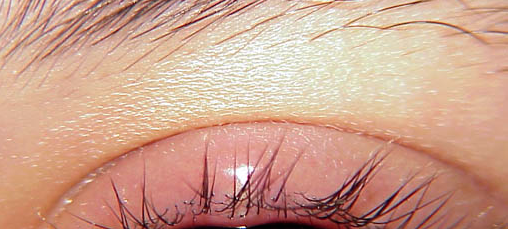Stye
Template:DiseaseDisorder infobox
|
WikiDoc Resources for Stye |
|
Articles |
|---|
|
Media |
|
Evidence Based Medicine |
|
Clinical Trials |
|
Ongoing Trials on Stye at Clinical Trials.gov Clinical Trials on Stye at Google
|
|
Guidelines / Policies / Govt |
|
US National Guidelines Clearinghouse on Stye
|
|
Books |
|
News |
|
Commentary |
|
Definitions |
|
Patient Resources / Community |
|
Directions to Hospitals Treating Stye Risk calculators and risk factors for Stye
|
|
Healthcare Provider Resources |
|
Continuing Medical Education (CME) |
|
International |
|
|
|
Business |
|
Experimental / Informatics |
Editor-In-Chief: C. Michael Gibson, M.S., M.D. [1]; Associate Editor(s)-in-Chief: Jesus Rosario Hernandez, M.D. [2]; Faizan Sheraz, M.D. [3]
Synonyms and keywords: Hordeolum.
Overview
A stye is an infection of the sebaceous glands at the base of the eyelashes on, inside, or under the eyelid.[1] While they produce no long-term damage, styes can be painful.
Causes
Styes are generally caused by a Staphylococcus aureus bacteria infection and are particularly common in infants, though people of any age may experience them. They can be triggered by stress, poor nutrition or lack of sleep.[2]
A stye can be secondary, caused by blepharitis. A blocked oil gland near the eye, a chalazion, is often mistaken for a stye.[3]
Diagnosis
History and Symptoms
The first signs are tenderness, pain, and redness in the affected area. Later symptoms that arise include swelling, watering of the eye, sensitivity to light, and discomfort during blinking. A yellowish bump develops in the affected area.
Treatment
Medical Therapy
- Hordeolum[4]
- 1. External hordeolum, for a single lesion
- Supportive therapy: application of warm compresses 4-6 times/day.
- Note: Antibiotic therapy is questionable value for a single lesion and often not indicated.
- 2. External hordeolum, for multiple/recurrent lesions
- Preferred regimen (1): antistaphylococcal antibiotic therapy Bacitracin topical qd-tid
- Preferred regimen (2): Erythromycin topical ointment up to 6 times/day, along with lid hygiene.
- 3. Internal hordeolum
- Supportive therapy: warm compressess in conjugation with systemic antistaphylococcal antibiotics
- Note (1): If the lesion do not respond to this regimen, incision and drainage are indicated.
- Note (2): Chalazion effectively treated with lid hygiene and warm compression in most circumstances.
Physical examination
Gallery
Head
References
- ↑ Eyelid lumps Retrieved March 19 2007
- ↑ "VisionWeb".
- ↑ Styes, AllAboutVision.com. Retrieved August 20, 2006.
- ↑ "Managing Eye Infections in Older Adults".
